Seat Belt Safety Overview
Most Washingtonians buckle up – nearly everyone knows that seat belts save lives. We can be proud that our seat belt use rate is one of the highest in the nation at a whopping 93 percent!
Still, that small number of people who don’t buckle up every trip are tragically among 106 traffic deaths that happened in 2019.
Do you know someone who doesn’t buckle up every trip? You can help reinforce that always using a seat belt is the safe and right thing to do. You can also help others learn the facts and encourage them to speak up if they know someone who doesn’t always buckle up.
Seat Belts Save Lives
Safety matters to Washingtonians. We practice physical distancing, wearing masks, and washing our hands. And most of us – 93 percent – wear our seat belts because safety matters to us.
-
Wearing your seat belt drops your risk of fatal injury in a crash by 45%. There is no substitute.
-
You can help save a life today by getting all of Washington to wear their seat belts:
-
Model: Always wear your seat belt
-
Discuss: Speak with family members, especially young drivers, about the importance of seat belt use.
-
Advocate: Say something when you see someone not wearing their seat belt
-
-
Front seat or back seat, city roads or country roads, big trucks or small cars, it’s the same: Seat belts save lives.
Seat Belt Use in Washington
Most Washingtonians wear their seat belt, with the state’s seat belt use rates at 93.2 percent, one of the highest in the nation.
-
Eight counties have better rates than the state rate (Benton, Chelan, Clark, Cowlitz, Grant, King, Kittitas, Lewis).
-
Three counties have lower seat belt use rates than the state rate (Kitsap, Pierce, and Thurston).
-
The other 13 counties had similar rates as the state.
Percent of All Fatal and Serious Injury Crashes
That Were Unrestrained-Related, by County, 2015–2017
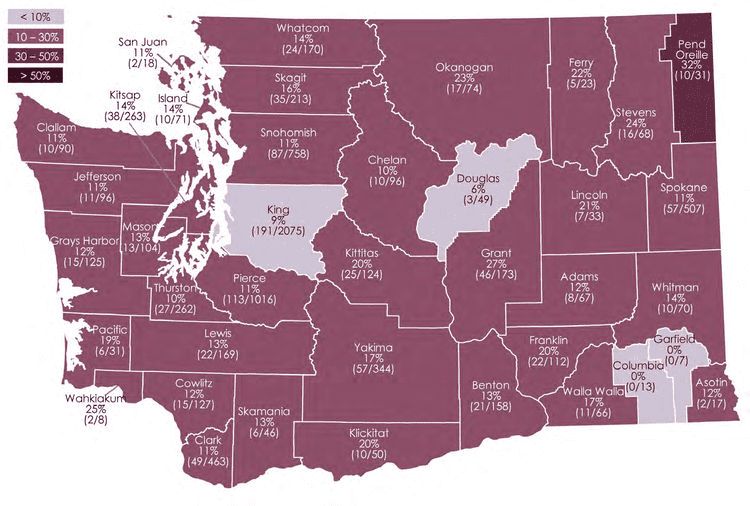
Despite Washington’s high seat belt use rate, people still die on Washington roads who were not buckled up. In 2019:
-
More than 20% of road deaths in Washington involved people not wearing a seat belt: 106 people out of 524.
-
81% were the drivers.
-
69% were male.
-
The most frequent age range of unrestrained drivers is 21-to-25-years-old, followed by 36-40-years-old.
Buckle-up to Save Lives
-
Seat belts save lives. Your chance of surviving a crash increase by 45% if you are wearing your belt.
-
According to the 2019 Target Zero plan, “much of the success in reducing traffic fatalities and serious injuries has occurred because of vehicle design and seat belt use.”
-
Nationally, seat belts saved an estimated 14,955 lives in 2017, according to the National Highway Traffic Safety Administration.
De-Bunking a False Sense of Security
It’s easy to buy-in to common misperceptions of security (statistics below are national):
-
Big vs. Small: If you’re not buckled, being in a pickup or other large vehicle isn’t safer. In fact, 61 percent of pickup truck occupants who were killed in 2016 were not buckled up. That’s compared to 42 percent of passenger car occupants who were not wearing seat belts when they were killed. Big truck or small car, seat belts are the safest bet.
-
Front Seat vs. Back Seat: Too many people wrongly believe they are safe in the back seat unrestrained. Forty-seven percent of all front-seat passenger vehicle occupants killed in crashes in 2016 were unrestrained, but 57 percent of those killed in back seats were unrestrained. If you’re in the back, buckle-up.
-
Rural Road vs. City Street: People who live in rural areas might believe that their crash exposure is lower, but in the U.S. in 2016, there were 13,732 passenger vehicle fatalities in rural locations, compared to 9,366 fatalities in urban locations. Out of those fatalities, 49 percent of those killed in the rural locations were not wearing their seat belts, compared to 46 percent in urban locations. Whether on busy city streets or a dusty rural road, buckle up to stay safe.
Here are sample graphics and related content that we encourage you to use on your organization’s social media. Feel free to adapt for use on your website or customized emails too.
Wearing your seat belt drops your risk of fatal injury in a crash by 45%. Get home: No ruby slippers required – just your seat belt!
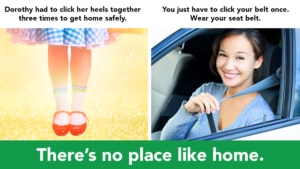
Wearing your seat belt drops your risk of fatal injury in a crash by 45%. There is no substitute.
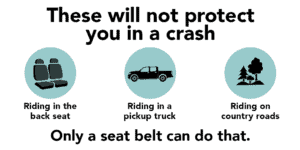
There’s always something more we can do to save lives by getting people to buckle up!
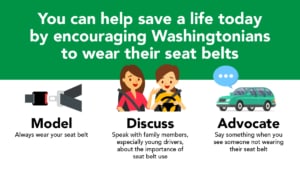
Safety is appealing.
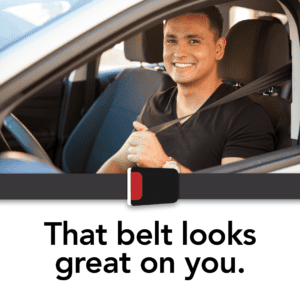
Safety is appealing.
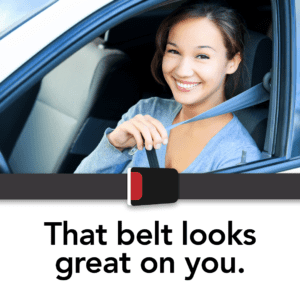
Llénelo. Póngase el cinturón.
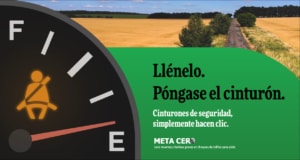
Not wearing a seat belt? Now that’s just scary. Buckle Up
Setting an example: I feel safer when I’m buckled up and when she’s buckled up.
“I know the importance of wearing a seat belt.” Tina, a health care worker and a mom, speaks out.
Take this quiz and test your knowledge about using seat belts. Click on the question to see the answer.
If your car has air bags you still need to wear a seat belt. Myth or Real Deal?
Real Deal. The safest way to ride is buckled up in a vehicle equipped with air bags. Even without an air bag, you are safer buckled up than you are with an air bag and not buckled up.
If you’re not going far or not traveling fast, seat belts are still necessary. Myth or Real Deal?
Real Deal. Seemingly routine trips can be deceptively dangerous. Most fatal crashes happen within 25 miles from home and at speeds of less than 40 mph.
Even if you’re in a pickup truck or other large vehicle a seat belt is necessary. Myth or Real Deal?
Real Deal. For occupants in SUVs, pickups, and vans, seat belts reduce the risk of fatal injury to the driver and front seat passenger by 60%.
It’s essential for guys to wear seat belts. Myth or Real Deal?
Real Deal. Young men are most at risk. Among male passenger vehicle occupants ages 18-34 who were killed in 2017 fatal crashes, 60% were not buckled.
SO, HOW DID YOU DO?
*Courtesy of NHTSA



